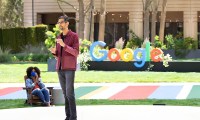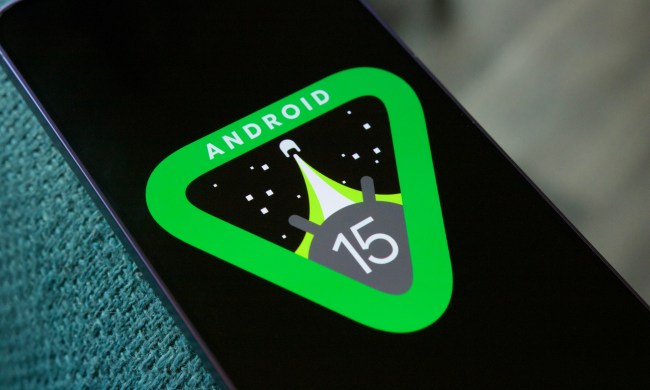Google has numerous events throughout the year, but I/O is by far the biggest. It’s a three-day affair of keynote presentations, developer workshops, and product announcements, and it’s where Google has unveiled a range of innovations, including Project Jacquard, Google Home, and Daydream.
Now that the Google I/O 2017 keynote has ended, we know what some of Google’s biggest releases for the year are. Keep in mind, the show isn’t totally over yet — you can keep up with the presentations and news at the Google I/O website, and Digital Trends is covering every major I/O announcement — you can check out our coverage here.
So what have we seen from the show? Check out all of Google’s major announcements from Google I/O 2017.
Everything we saw at Google I/O
Android O

Android recently hit a milestone, now being installed on a massive 2 billion devices and Google isn’t going to stop working on it now. Google unveiled a lot of information about Android O before Google I/O, so we actually already have a pretty good idea of what Android O will end up looking like. The new operating system features a revamped notification system, as well as new battery life management systems.
On top of that, Android O now features some major improvements to Bluetooth audio. New Bluetooth codecs in Android O promise to bring clearer and richer sound — specifically the support of the new Sony LDAC wireless codec. Android O is also bringing new multi-tasking features, including picture-in-picture mode. You can check out everything that is new in Android O here.
But what of that was new from Google I/O? Well, the major announcement was that the Android O developer preview is now available to download, so if you’re a developer or just very adventurous, you can download it to your phone for yourself. Keep in mind, the OS will be buggy and some features may not work properly.
Google Photos

Google Photos, Google’s cloud-based photo platform, taps artificial intelligence to organize and enhance your photos, and it’s one of Google’s most popular services — in fact, Google announced it had hit 500 million users at Google I/O. It can pick out family members and friends from group snaps and selfies, guess someone’s age, and even recommend changes that improve color, clarity, light level, and contrast. But now, it can do more.
At Google I/O, Google announced a number of great new features for Google Photos. Namely, Google has made it much easier to share photos with friends and family, so you no longer have an excuse to not share the photos from your latest vacation. Now, when you upload a photo to Google Photos, Google will suggest sharing the photo — after which you can tap a button to have the app do so. There is also a new tab in the Photos UI, which lets you sort through photos to share and share them quickly and easily.
Sharing is not the only new feature in Google Photos. Google also recognizes that sometimes physical photos are a little more appropriate and has launched Photo Books, a service that allows you to create albums of photos and have them printed straight from the Google Photos app. Softcover books cost $10, while hardcover books will cost $20.
Last but not least is Google Lens, which is being baked into Google Photos and allows you to intelligently find out information just by pointing your camera at an object. For example, the app will be able to translate a sign into your native language or show reviews about a business based on you pointing the camera at a shop or restaurant.
Google Home

Google Home, Google’s smart speaker, is flying off the shelves. Some analysts estimate that the company’s on track to sell a million units by the middle of 2017. It’s no surprise that Google is working on improving Home and at Google I/O 2017, the company announced a number of features for the device.
Perhaps the biggest new feature for Google Home is that it now allows for free calling to any phone number in the U.S. — simply ask the device to call a contact, and it will do so. By default, it will call from a private number, but you can also link your own phone number so it shows up on the other user’s caller ID.
Google also added support for more music streaming services, including Spotify’s free service, Soundcloud, and Deezer. If there is another service that is not on the list, Google Home also now supports Bluetooth, so you can play audio from any iOS or Android device over Bluetooth.
Next up is the fact that Google Home now supports visual responses. You can ask it to show you your calendar, and it will send Calendar information to your Android TV or Android phone. You can also tell it to send directions to your phone, so by the time you get in your car those directions will be ready to go.
Google Assistant

The Google Assistant, Google’s umbrella brand for the virtual assistant on newer Android devices, Google Home, Android TV, and Android Wear, launched at I/O 2016. Back then, it could schedule reminders and pull up nearby movie showtimes, among other tasks. Now, however, it can do a ton more stuff.
Perhaps the biggest update to Google Assistant is that it’s now available on iOS — so if you’re an iPhone user and like Google Assistant, you can still use it for yourself.
Not only is Assistant coming to Android, but it is also getting a few great new features — such as the ability to interact with Assistant through text. So, instead of having to use your voice to control Assistant — which can be embarrassing in public — simply type what you need through text.
Another great new feature is Assistant’s integration with Google Lens, a computational vision engine that uses artificial intelligence to do things like translate signs on the go or offer up reviews about a restaurant when you point the camera at that restaurant.
It makes sense that Google is updated Assistant — the service is now available on 100 million devices.
Daydream and VR

Daydream is Google’s virtual reality service, however, to use Daydream, you had to use a smartphone that was capable of handling it. Soon, however, that might change.
At Google I/O 2017, Google announced that it was working on stand-alone Daydream headsets — so instead of having to use your phone, you will have a VR-specific device. Google is currently working with both HTC and Lenovo on a new Daydream headset, so we should expect some more announcements related to the headsets in coming months. The headsets may have a few features that other Daydream systems don’t offer — like, for example, WorldSense, Google’s new system that allows for positional tracking inside of a room.
On top of the stand-alone VR headsets, Google announced that a few new phones would soon be Daydream-ready — including the Samsung Galaxy S8 and a future LG smartphone, which we assume to be the LG V30.
Project Tango and AR

While virtual reality was a focus at Google I/O 2017, augmented reality also made an appearance. Perhaps the biggest AR-related announcement we saw at Google I/O is VPS, or Virtual Positioning System — a system that allows users to be tracked in a space through a phone’s camera.
One practical use of the system, which Google showed off at the show, was using it to find a particular product in a store. Once you identify what item you want to find, a phone can use the camera to track positional trackers and direct you to exactly where you need to be in the store.
Another major goal for VPS is education. Through Google Expeditions, kids can explore scientific concepts, like the inner workings of a human heart, as if they were in front of them. It’s a cool application of the tech and should help make learning a little more immersive.
Google for Jobs

At the core of Google’s business is Google Search, and Google also announced a few updates to Google Search at Google I/O. One major change to Google Search is that Google will soon list jobs straight in Search — no need to navigate to job search websites.
The feature will pull listings from a range of job search services, including LinkedIn, Monster, and so on — and will then consolidate them in an easy-to-use interface. You can then limit results based on location, job type, and more — so you can easily find what could be the perfect job for you. The feature is launching in the U.S. in coming weeks and will likely expand to other countries in the near future.
Android TV

Along with an updated version of Android for the smartphone, Android TV is also getting an update. The update is largely aesthetic, but Google is hoping that it will make Android TV a little easier to navigate. The update will also see a few more animations added to the home screen, and at the top of the screen, users will be able to pin their favorite apps for quick access.
The new Android TV actually represents a pretty massive redesign. The new interface does not just show apps — Google is actually asking developers to turn their apps in “channels,” so instead of navigating first to the Netflix app to keep watching your last show, you will be able to just switch it straight on from the home screen.
Seurat

Google is making some serious moves under the hood, namely with a new technology called Seurat — which is Google’s attempt to bring desktop-level graphics to a smartphone using a few tricks behind the scenes.
The technology basically takes virtual reality scenes, then basically downscales the underlying geometry to make the scene able to be rendered by a smartphone. Google even showed off a demo of the tech at Google I/O. In partnership with ILMxLab, the company was able to take some scenes from Rogue One: A Star Wars Story, and create a detailed scene that is only slightly downgraded from the scene you would get on desktop hardware.
Cars

Android Auto did not make much of an appearance at Google I/O this year, but what could end up being the evolution of Android Auto did. Google partnered with Volvo and Audi to develop full Android integration into Audi and Volvo’s cars.
The real difference between Android Auto and these new interfaces is that their much more specific to how Volvo and Audi want them to look — but they still make use of Google services like Google Maps, and they feature Android brains. There are also apps to control different aspects of the car — for example, there is a built-in app to control the air conditioner, meaning you will be able to also control those things using Google Assistant.



